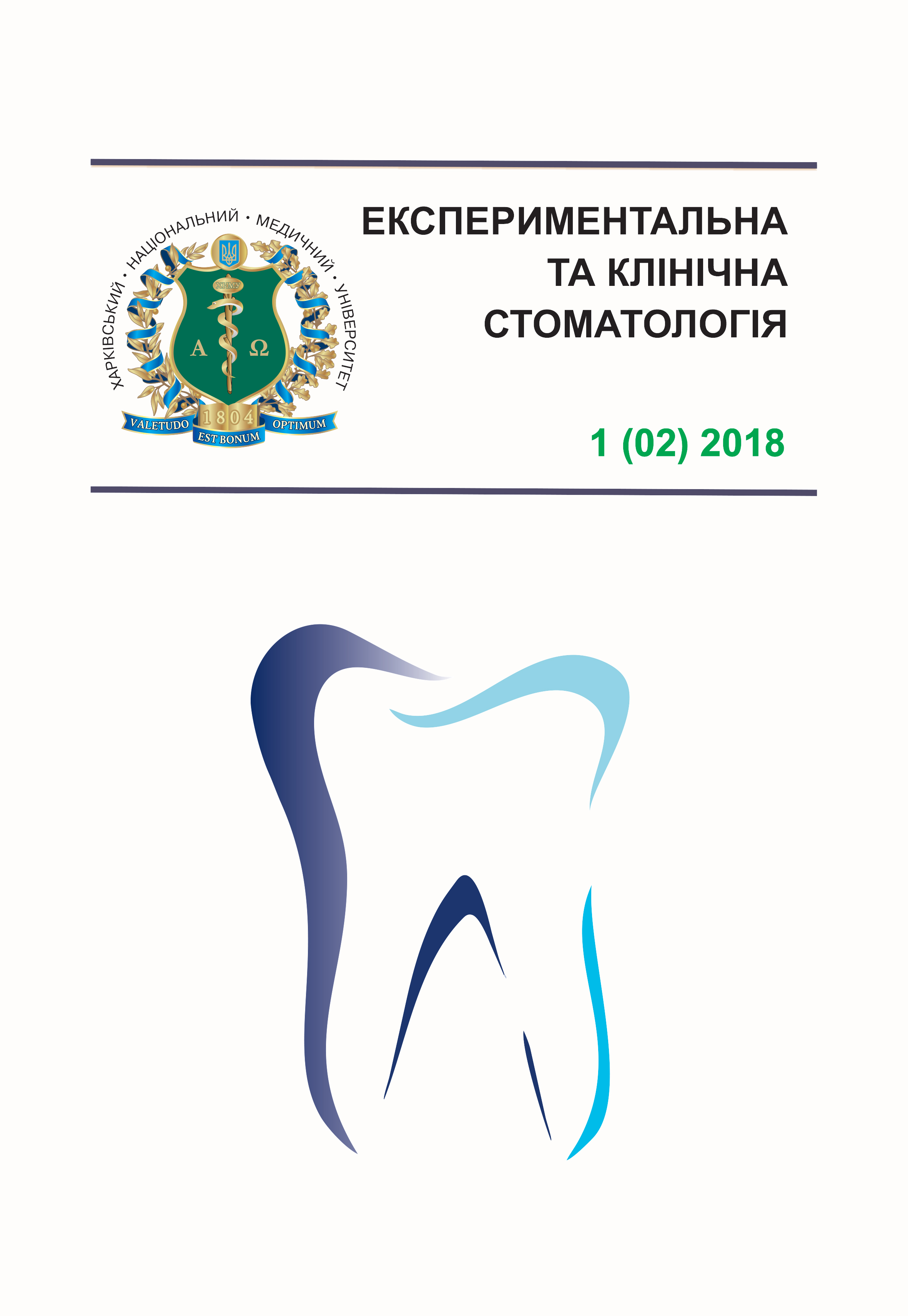Abstract
Introduction. The advisability to keep the third molars is a debate for a long time.
The aim of this work is to carry out a retrospective study of frequency and structure of foci of chronic odontogenic infection associated with third molars in males 15–44 years old.
Objects and methods. We analyzed the data of cone-beam computed tomography in 109 men in accordance with who recommendations of WHO distributed in age groups: 15–19; 20–24; 25–34; 35–44.
The results revealed that among the examined persons there are nobody that do not have four molars and 76 (70 %) people have all the third molars. Analysis of the presence of pathological pockets in the region of these teeth showed that they have the 76 (70 %) and 33 (30 %) are free from these. 25 (6 %) examined teeth are affected with caries. Combined lesions were fond in 7 (6 %) of persons. Changes in the periapical tissues were fixed in 196 (50 %) of the observations.
Conclusion. The presented material is the rationale for studies on the influence of third molars in the specified age periods for the homeostasis of the oral cavity and the entire body as healthy individuals and patients with traumatic injuries of the jaws.
Keywords: odontogenic foci of infection, dental caries, pathological pocket, and the third molars.
References
Алямовский В.В. Множественные анатомические вариации строения моляров верхней челюсти / В.В. Алямовский, О.А. Левенец, А.А. Левенец // Эндодонтия Today // 2014. – № 4. – С. 22–25.
Герасимов А.Н. Медицинская статистика / А.Н. Герасимов. – М.: Медицинское информационное агентство, 2007. – 480 с.
Конев С.С. Клинические варианты формирования одонтогенных флегмон / С.С. Конев, К.С. Гандылян, Е.В. Елисеева и др. // Современные проблемы науки и образования. – 2015. – № 6. – С. 166.
Козин Д.В. Фармакоэпидемиологический анализ гнойно-воспалительных заболеваний челюстно-лицевой области у жителей Пензенской области / Д.В. Козин, О.П. Родина, И.Я. Моисеева // Известия высших учебных заведений. Поволжский регион. – 2010. – Т. 13, № 1. – С. 99–105.
Куонг В.В. Современный взгляд на этиологию и патогенез одонтогенных абсцессов и флегмон челюстнолицевой области / В.В. Куонг, Д.С. Аветиков, С.Б. Кравченко // Вестник проблем биологии и медицины. – 2014. – Т. 107, № 2. – С. 79–84.
Жулев Е.Н. Распространенность заболеваний височно-нижнечелюстного сустава среди студентов нижегородских вузов / Е.Н. Жулев, Н.Г. Чекалова, П.Э. Ершов, О.А. Ершова // Медицинский альманах. – 2016. – Т. 42, № 2. – С. 166–168.
Реброва О.Ю. Статистический анализ медицинских данных. Применение пакета прикладных программ STATISTICA / О.Ю. Реброва. – М.: МедиаСфера, 2002. – 312 с.
Скапкарева В.О. Эволюция восьмого зуба (третьего моляра) у человека / В.О. Скапкарева, О.А. Жигальский // Междунар. журн. экспериментального образования. – 2014. – № 3 (часть 2). – С. 72–74.
Стоматологическое обследование: основные методы. 5-е изд. – М.: ВОЗ; ГБОУ ВПО МГМСУ им. А.И. Евдокимова, 2013. – 135 с.
Фанакин В.А. Конусно-лучевая компьютерная томография в детской стоматологии. Обзор современной литературы // В.А. Фанакин, И.А. Бутюгин, Е.В. Батанова // Проблемы стоматологии. – 2014. – № 4. – С. 5–10.
Шамов И.А. Биоэтика / И.А. Шамов. – М.: Медицина, 2009. – 369 с.
Brignardello-Petersen R. Imaging methods add extra variability to risk assessment and treatment decisions when planning for third-molar extraction / R. Brignardello-Petersen // J. Am. Dent. Assoc. – 2017. – Vol. 148, № 7. – P. 86.
Kontaxis K.L. Access to the mandibular angle using a sagittal split to address pathologic displacement of a mandibular third molar / K.L. Kontaxis, D.M. Steinbacher // J. Oral Maxillofac. Surg. – 2015. – Vol. 73, No. 12. – P. 1–5.
Levi G. Mandibular third molar extractions with proximity to the inferior alveolar nerve canal: what are the alternatives? / G. Levi, L. Levin // Refuat. Hapeh. Vehashinayim. – 2014. – Vol. 31, No. 1. – P. 19–23.
Pepato A.O. Lower third molar infection with purulent discharge through the external auditory meatus. Case report and review of literature / A.O. Pepato, M.A.K. Yamaji, C.E. Sverzut, A.E. Trivellato // Int. J. Oral Maxillofac. Surg. – 2012. – Vol. 41, No. 3. – P. 380–383.
Rajapakse S. Current thinking about the management of dysfunction of the temporomandibular joint: a review / S. Rajapakse, N. Ahmed, A.J. Sidebottom // Br. J. Oral Maxillofac. Surg. – 2017. – Vol. 55, No. 4. – P. 351–356.
Plotino G. Symmetry of root canal morphology of maxillary and mandibular molars in a white population: a cone-beam computed tomography study in vivo / G. Plotino, L. Tocci, N.M. Grande et al. // J. of Endodontics. – 2013. – Vol. 39, No. 12. – P. 1545–1548.

